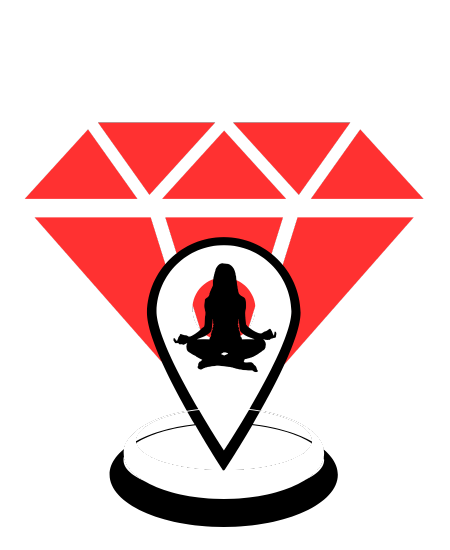
Let’s talk about reflexology
Reflexology is based on the principle that specific points on the feet, hands, and ears are directly connected to other areas of the body. It is often considered a form of complementary medicine and is used to promote relaxation, improve health, and support healing by stimulating these reflex points. Here’s a deeper dive into reflexology:
1. The History of Reflexology
Reflexology has ancient origins and can be traced back to cultures in Egypt, China, and India, where it was practiced in different forms. However, modern reflexology as we know it today was developed in the early 20th century, primarily by an American physician named Dr. William Fitzgerald. He introduced the concept of “zone therapy,” where he mapped the body into ten vertical zones, each linked to reflex points in the feet and hands.
Later, Eunice Ingham, a physiotherapist, refined and popularized this concept, focusing mainly on the feet, and published detailed maps of reflex zones.
2. How Reflexology Works
The key idea behind reflexology is that the body has energy pathways (also called meridians) and that the pressure applied to certain reflex points can help balance the body’s energy flow. Reflexologists believe that blockages in these energy pathways can lead to physical or emotional health issues, and applying pressure can help clear these blockages, promoting healing.
Here are some common areas and their corresponding organs:
- Toes: Brain, head, neck, sinuses.
- Ball of the foot: Heart and chest.
- Arch: Stomach, digestive organs, pancreas.
- Heels: Lower back, sciatic nerve.
- Sides of the feet: Lungs, shoulders, arms.
3. The Benefits of Reflexology
While scientific evidence is still being gathered, many people report various benefits of reflexology. Some of the commonly cited benefits include:
- Stress Reduction and Relaxation: Reflexology is deeply relaxing, helping to reduce stress and promote a calm state of mind. It may help activate the body’s relaxation response, which lowers heart rate and reduces blood pressure.
- Pain Relief: It may help alleviate chronic pain, such as back pain, headaches, and migraines, by promoting relaxation and improved blood circulation.
- Improved Circulation: Reflexology may stimulate better blood flow throughout the body, leading to improved oxygen and nutrient delivery to tissues.
- Improved Sleep: Regular reflexology sessions may help with insomnia or poor sleep quality by reducing stress and promoting relaxation.
- Boosted Immune System: By encouraging a balanced energy flow, reflexology may help enhance the body’s natural defense mechanisms.
- Enhanced Digestive Health: Reflexology can help address digestive issues such as constipation, bloating, and indigestion by stimulating relevant reflex points.
4. What to Expect in a Reflexology Session
A reflexology session typically lasts between 30 to 60 minutes and is performed by a trained and certified reflexologist. Here’s what to expect during a typical session:
- Consultation: The reflexologist will start by asking about your health history and any specific areas of discomfort or concern.
- Positioning: You will usually be seated or reclined, either on a massage table or a chair. Your feet (or hands or ears) will be exposed and relaxed.
- Pressure Techniques: The reflexologist will use their fingers, thumbs, or specialized tools to apply varying amounts of pressure to specific reflex points. The pressure can range from light to firm, depending on the individual’s sensitivity.
- Sensation: You might experience different sensations during the session, from gentle relaxation to slight tenderness when the reflexologist applies pressure to certain areas. Mild discomfort is normal, but it shouldn’t be painful.
5. Reflexology for Specific Conditions
Reflexology is often used as a complementary treatment for a variety of conditions. Some of the conditions it is believed to help include:
- Chronic Pain: Reflexology is commonly used for conditions like arthritis, fibromyalgia, and lower back pain.
- Anxiety and Depression: Reflexology may help alleviate stress, anxiety, and symptoms of depression by promoting relaxation and restoring balance.
- Digestive Problems: Reflexology can be helpful for digestive issues such as irritable bowel syndrome (IBS), constipation, or bloating.
- Hormonal Imbalance: Some women use reflexology to help balance hormones, especially related to menstrual irregularities or menopause symptoms.
Sleep Disorders: Reflexology may improve the quality of sleep, especially for individuals who struggle with insomnia.
6. Reflexology vs. Other Forms of Massage
While reflexology involves pressure on specific points of the feet, hands, or ears, traditional massage therapy typically focuses on muscle relaxation and soft tissue manipulation. Reflexology is more about stimulating reflex points related to organs and systems in the body, whereas regular massage targets muscle tension and circulation.
7. How to Find a Reflexologist
If you’re interested in trying reflexology, it’s important to find a qualified practitioner. Look for someone who is certified by a reputable reflexology association or organization, such as the American Reflexology Certification Board (ARCB) in the U.S. or the Association of Reflexologists (AoR) in the U.K.
Before booking a session, it’s a good idea to:
- Read reviews or ask for recommendations from friends or healthcare providers.
- Discuss your health history with the practitioner to ensure reflexology is suitable for you.
- Clarify costs and treatment duration upfront.
8. Precautions
While reflexology is generally safe, it’s not suitable for everyone. It should be avoided or approached with caution if you have certain conditions like:
- Foot injuries or fractures
- Severe circulatory issues (e.g., deep vein thrombosis)
- Pregnancy (although some practitioners specialize in prenatal reflexology)
Always consult with your healthcare provider before starting any new treatment, especially if you have underlying medical conditions.




